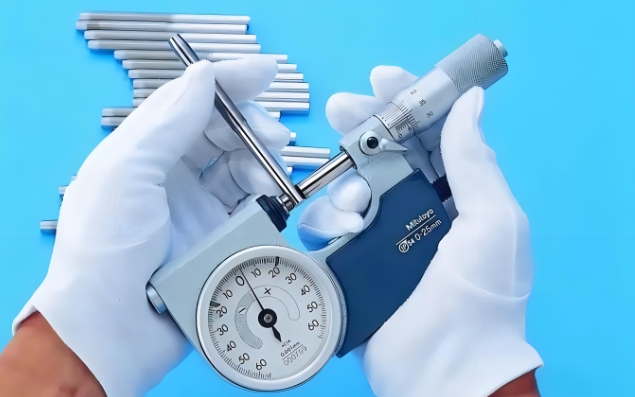1. Introduction to CNC Machining Accuracy
CNC (Computer Numerical Control) machining has become one of the most crucial methods of producing high-precision parts for industries such as aerospace, automotive, and electronics. The precision of CNC machining—known as CNC machining accuracy—determines the quality, reliability, and performance of the manufactured parts.
In this guide, we’ll explore the different aspects that influence CNC machining accuracy, from machine tool capabilities to environmental factors, and how manufacturers can optimize processes for better precision.

2. Key Factors Influencing CNC Machining Accuracy
CNC machining accuracy is influenced by several factors. Understanding each of these is vital for producing high-precision parts.
Machine Tool Characteristics
The accuracy of a CNC machine is directly related to its design, build quality, and mechanical components. High-quality CNC machines are designed with tight tolerances and advanced features to minimize errors and ensure high precision. Key elements include:
- Spindle performance: The spindle’s rigidity and stability can affect machining accuracy.
- Linear motion systems: The quality of the linear guides and ball screws is critical in determining how precisely the machine moves.
- Thermal stability: CNC machines with better thermal management produce more consistent results.
Material Properties
Different materials behave differently during machining. The properties of the material—such as hardness, thermal conductivity, and brittleness—can influence the cutting process and ultimately affect the machining accuracy. For example, harder materials are more difficult to machine precisely without the risk of tool wear.
Tooling and Tool Wear
The choice of tooling, including the type of cutting tools and their material composition, plays a significant role in machining accuracy. As tools wear over time, their effectiveness decreases, leading to deviations in precision. Regular tool maintenance and tool replacement are crucial to maintaining accuracy.
Environmental Factors
Temperature fluctuations, humidity, and dust can all impact CNC machining accuracy. Precision machining requires a controlled environment to avoid variations caused by these factors. Many high-end CNC machines are equipped with temperature compensation systems to correct for such influences.
3. Types of CNC Machining Accuracy
CNC machining accuracy can be categorized into several types, each focusing on a different aspect of the manufacturing process.
Dimensional Accuracy
Dimensional accuracy refers to how closely the machined part matches the desired measurements in terms of length, width, and height. Achieving tight dimensional tolerances is essential in many industries where parts must fit precisely with other components.
Geometric Accuracy
Geometric accuracy relates to the overall shape and form of the part, including flatness, roundness, straightness, and angularity. Even if the dimensions are correct, a part may still have poor geometric accuracy, leading to functional issues.
Surface Finish Accuracy
Surface finish accuracy refers to the smoothness and texture of the part’s surface. While this may not always affect the part’s functionality, it is critical in applications such as optics or medical devices, where surface roughness can impact performance.
4. Importance of CNC Machining Accuracy in Manufacturing
CNC machining accuracy is crucial for several reasons:
- Improved Product Quality: Achieving high CNC machining accuracy results in parts that fit together properly and perform reliably in their respective applications.
- Cost Efficiency: Higher accuracy reduces the need for rework or scrap parts, saving time and material costs.
- Competitive Advantage: Manufacturers who can produce highly accurate parts are more competitive in industries that require stringent quality control standards.
5. Techniques for Improving CNC Machining Accuracy
There are various methods manufacturers can employ to improve CNC machining accuracy. Some of these include:
Calibration and Maintenance
Regular calibration and maintenance of CNC machines are essential to ensure that they operate at optimal precision. This involves checking the alignment of the machine, as well as maintaining its mechanical and electrical components.
Choosing the Right Tools and Materials
Selecting high-quality tools and materials specifically designed for precise machining can significantly improve accuracy. It’s also important to consider the material’s response to heat and its interaction with cutting tools.
Advanced CNC Control Systems
Modern CNC control systems, such as those with adaptive control and feedback loops, can compensate for inaccuracies during machining. These systems make real-time adjustments to maintain precision.
6. Common Challenges in Achieving CNC Machining Accuracy
Despite advancements in CNC technology, there are several challenges in maintaining machining accuracy, including:
- Thermal expansion: Machines and materials expand when exposed to heat, causing deviations in machining.
- Tool wear: As tools wear out, their cutting performance degrades, affecting the part’s accuracy.
- Machine vibrations: Vibrations caused by the machine’s moving parts or external factors can lead to inaccuracies in part geometry.
7. CNC Machining Accuracy in Different Industries
CNC machining accuracy is required in various industries where high precision is critical:
- Aerospace: Aerospace components require extremely tight tolerances for safety and performance.
- Automotive: Automotive parts, such as engine components, require precision for proper assembly and function.
- Medical Devices: Medical device manufacturers need high-precision parts for implants, surgical instruments, and diagnostic equipment.
8. Conclusion
Achieving CNC machining accuracy is a complex process influenced by various factors including machine tool quality, material properties, tooling, and environmental conditions. Manufacturers that understand and control these factors can significantly improve the precision of their parts, leading to higher quality products, reduced costs, and a competitive edge in the market.
By implementing best practices in calibration, tool selection, and machine maintenance, businesses can continually improve CNC machining accuracy. As CNC technology evolves, new innovations will continue to enhance the precision and efficiency of this essential manufacturing process.






